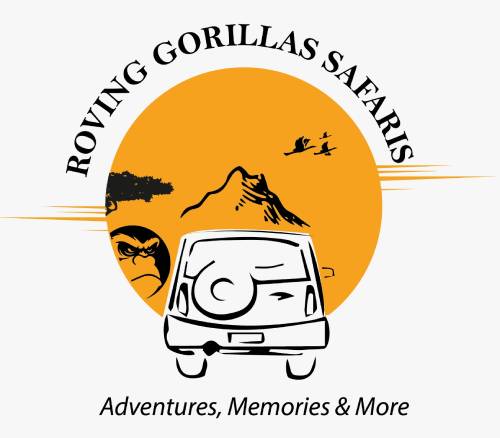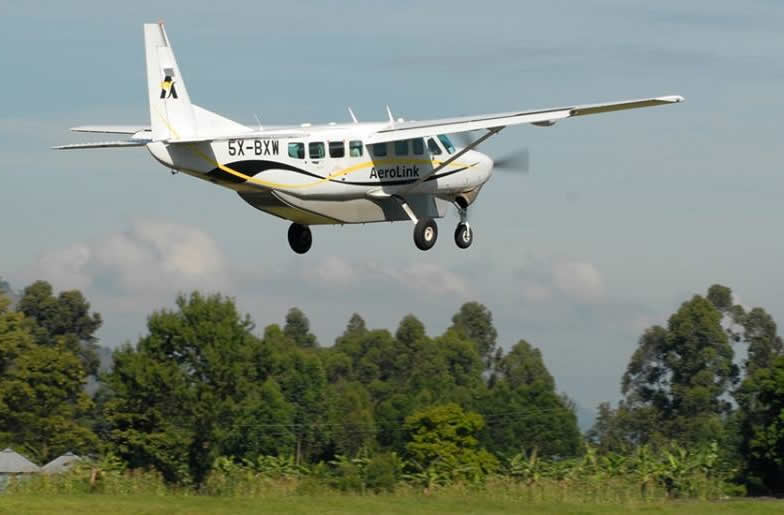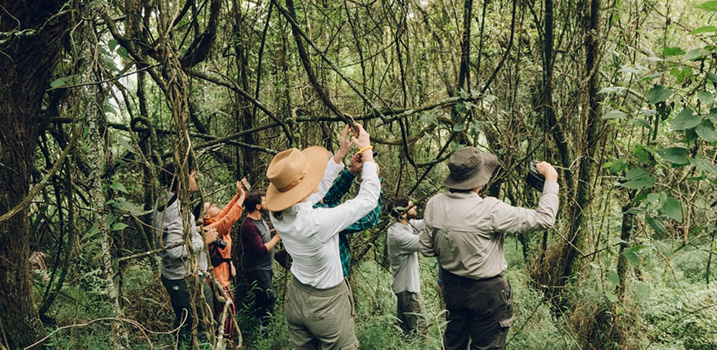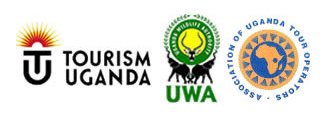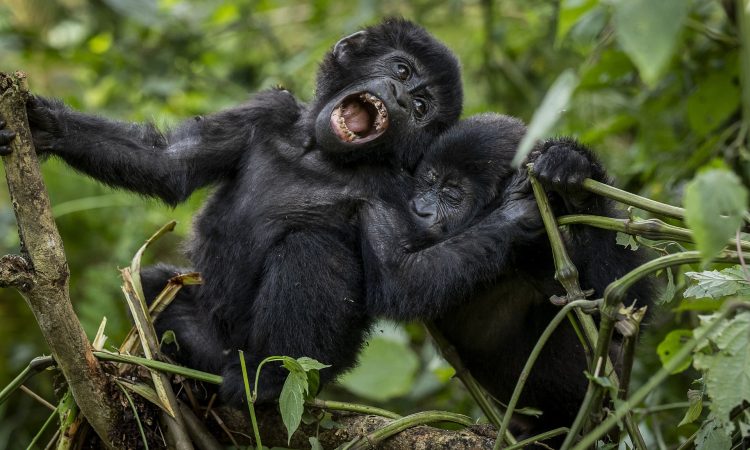
Gorilla Trekking Rules & Regulations
Gorilla Trekking Rules & Regulations.
Gorilla Trekking Rules & Regulations : Rules and Guidelines for Gorilla Trekking: Only three nations in the world Uganda, Rwanda, and the Democratic Republic of the Congo are home to the endangered mountain gorillas. With fewer than 900 remaining in the wild, mountain gorillas are highly endangered according to the International Union for Conservation of Nature, and it’s wonderful that East Africa is a home to these exceptional primates. In comparison to other gorillas, mountain gorillas have thicker fur, which helps them adapt to the cold climates on the mountains where they reside. Gorillas typically inhabit groups of up to thirty members, with the dominant male known as the Silverback serving as the group leader. When embarking on a gorilla trekking safari excursion, you need abide by the following guidelines and regulations to perfect your safari experience.
The following are the gorilla trekking rules and regulations;
Tourists are required to maintain a seven meter distance while with gorillas you can look at the gorillas but prevent the Silverback eye contact. Eating and running while with gorillas is not permitted and your voices must be at a low tone.
Compared to golden monkeys who love flash lights in cameras, mountain gorillas do not allow you to take photos with flash cameras, because the flash light makes the mountain gorillas uncomfortable and can end up discharging.
Prior to the commencement of gorilla trekking, passports will be used for age verification. During the briefing, participants will also receive an instruction on the dos and don’ts of gorilla trekking safari. Afterwards, groups of eight individuals will be formed to track a certain gorilla family. The minimum age for gorilla trekking is 15 years.
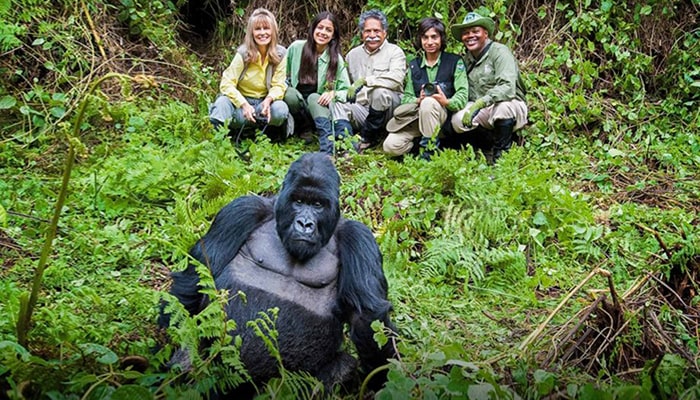
While on relocating in search if these great apes, tourists must keep low tone, keep in touch with others and carry all their rubbish back to their respective lodges because trashing in the forests is not allowed.
Gorillas reside on the slopes of volcanic mountains. Your level of fitness may need to be adjusted based on the group you are hiking with and the terrain you will be covering. Porters can assist people with impairments into and out of sedan chairs.
Gorilla trekking safari is not permitted for visitors with contagious illnesses like the flu or tuberculosis. This is a result of gorillas’ susceptibility to human illnesses.
Only four guests are permitted to participate in the four-hour gorilla habituation session.
Never try to escape from a mountain gorilla if it happens to discharge; instead, crouch down and seem submissive if one approaches you.
When going on a mountain gorilla safari, visitors need to carry a packed lunch, raincoats, hiking boots, cotton clothing, long sleeved shorts, and a good camera.
It typically takes thirty minutes to six hours to go gorilla trekking safari in Rwanda, Uganda, or the Congo, depending on where the gorillas are.
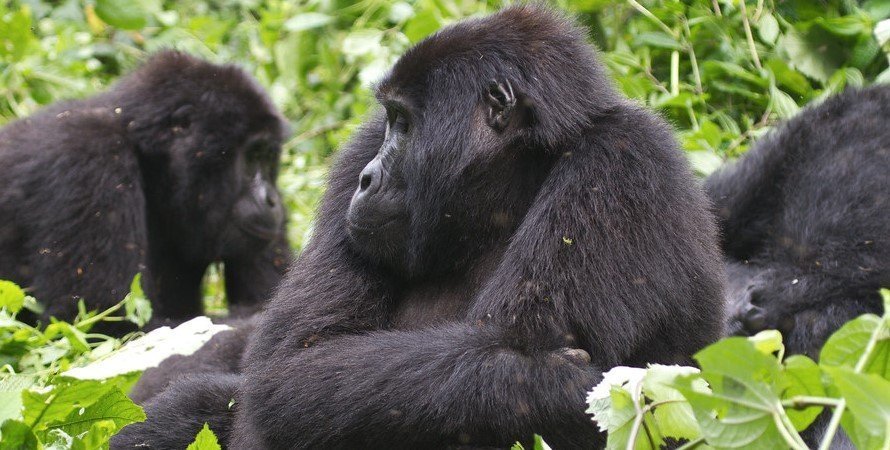
You’re not allowed to attempt or touch gorillas during gorilla trekking.
You are asked to glance away your head when coughing or sneezing in the presence of gorillas.
Don’t make unnecessary movements during the one hour observation of gorillas.
If you would like to go to the toilet while with in the forest during gorilla trekking, you will ask the guided to dig for you a hole of at least 30 cm deep and you ought to put in your stool when you finish.
Before thinking of gorilla trekking safari in three safari destinations that includes Uganda, Rwanda and Democratic Republic of Congo. You are requested to book for your gorilla trekking permit in advance due to high competition and not to be disappointed. Having a gorilla trekking permit enables you to be sure that you are going to carry out the safari activity.
During gorilla trekking you are requested to stay in your group, such that you cannot be disrupted by the gorillas around, staying in your group keeps you safe and makes your gorilla trekking safari wonderful.
Best time for gorilla trek in Rwanda, Uganda and Congo.
It is significant to highlight that because mountain gorillas’ travels are unaffected by seasonal variations, they may be trekked throughout the year. Visitors shouldn’t be very picky about the month they choose to go trekking, even though we will be talking about the benefits and drawbacks of going at certain times of the year. We’ve found that right after the rainy season ends, when the land is still verdant and productive, is the best time to go gorilla trekking safari. Accurately determining the start and conclusion of the wet and dry seasons is challenging because of the significant impact that global warming has had on African weather patterns. Ultimately, the traveler has the last say in when and where to visit. It is our responsibility to assist in determining the benefits and drawbacks of travelling throughout each season.
Like other humid countries, Rwanda, Uganda, and the Democratic Republic of the Congo have two distinct seasons: the dry and the wet. December to February and June to September are the times when the dry season occurs. Trekking mountain gorillas in the dry season has benefits. Additionally, it is the ideal season to go on a wildlife safari in Tanzania’ Serengeti, Kenya’s Maasai Mara, and Uganda’s several national parks. To witness the wildebeest migration, travelers can conveniently combine gorilla trekking with safaris at Queen Elizabeth National Park or Murchison Falls, Uganda. The greatest time to acquire crisp, clear pictures of the landscape, the mountain gorillas, and physical characteristics is when there aren’t any obstacles like mist or overgrown flora.
There are drawbacks to the dry season. Generally speaking, travel during this time is more expensive. It is hard to find gorilla permits, and it is hard to make last-minute reservations for gorilla tours. For those who are expecting for a less difficult walk or to be placed with a close gorilla group, the dry season is not the ideal time to visit. We advise booking your trip months in advance if you are hoping to see a certain gorilla troop; otherwise, they may all be reserved for other visitors. Some believe that going on a gorilla trekking safari during the dry season deprives nature enthusiasts of the chance to take in the breathtaking views of the African countryside following a downpour. First-time visitors may have the misconception that Africa is dry, although this is not always the case.
The months of October through November and March through April are known as the rainy seasons, or low seasons. It gets very difficult to trek mountain gorillas when the forests are extremely muddy. Because mountain gorillas live in rain forests, where rain might fall at any time of the year, we cannot completely rule out the possibility of mud, even during the dry season. It’s also crucial to remember that, unlike in Europe or North America, the rainy season does not last all day in Uganda, Rwanda, or the Democratic Republic of the Congo. The activity can proceed whether or not it is raining because it rains for one to two hours before the sun comes out again. Rain coats are provided to visitors so they can stay dry while walking in the rain. It is never possible to cancel gorilla trekking due to excessive rain. In spite of the muck and rain, we even know of people that prefer gorilla trekking during the rainy season to be more daring.
One of the benefits of trekking gorillas during the rainy season is that you find the park with less visitors/crowds where you can be given much attention from the park rangers by answering all your questions compared to when it’s during dry season. This suggests that you will be able to have the jungle to yourself and get up close and personal with the primates. This is the breeding season and the forests are full of activity. Because most hotels lower their rates to draw in more visitors, travelling during the wet season is typically less expensive than travelling during the dry season. During the busiest time of year, you can stay in one of the greatest luxury lodges, which may seem overpriced. Discounts on gorilla permits in Congo may also be available to tourists during the low-lying or rainy seasons. In the high season, gorilla permits in Congo cost $400; but, during the low season, the cost might drop to $200. Even in the off-season, the cost of a gorilla permit in Rwanda and Uganda stays the same.
